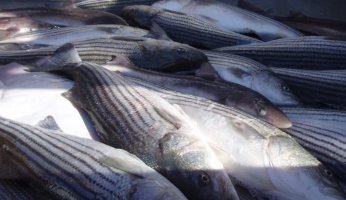5 Dangerous Fish You Might Encounter & How to Handle Them
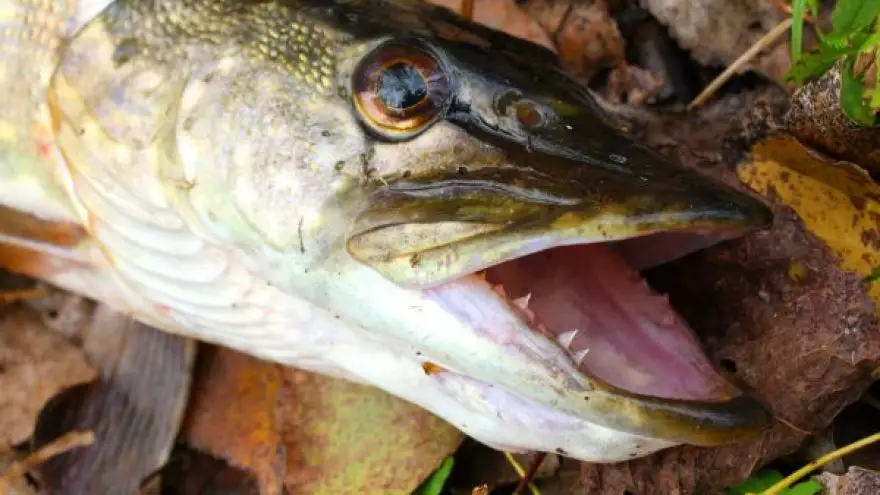 5 Dangerous Fish You Might Encounter & How to Handle Them
gearweare.net
5 Dangerous Fish You Might Encounter & How to Handle Them
gearweare.net
With the exception of those who eat humans whole, fish are generally not associated with being dangerous. While often perceived as disturbing to the eyes by appearance, nose by stench, and hands by texture, they are rarely a concern for our safety. However, there are fish in the Earth’s waters who do pose a risk to us, as humans, which we must know about and be able to safely interact with them should we encounter them.
While there are many dangerous fish you might encounter, each being unique in their risks, we will discuss five of them here, with a brief recommendation on how to handle them should the need arise.
Table of Contents
Pufferfish
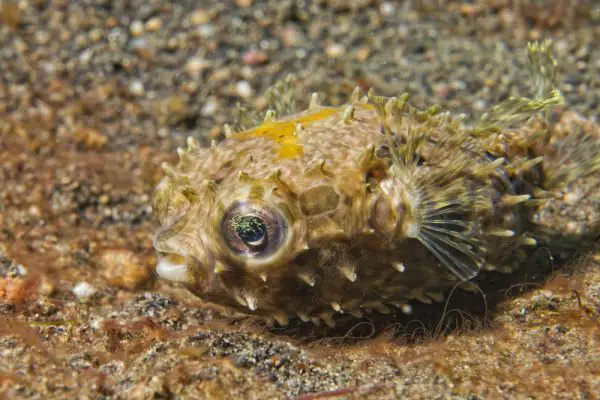
The pufferfish, also often known as a “blowfish,” may seem cute and fun on the outside, but once they become wary about their safety, they become anything but nice. These odd-looking fish are known for their ability to inflate themselves several times their original size by ingesting water (or sometimes air) when feeling vulnerable. Inherently slow, the pufferfish use this as their means to thwart off predators.
These pufferfish, having been labeled the “Most Poisonous Fish” (fisheriesblog.com), host a toxin called Tetrodotoxin, within their bodies. When released, the toxin can have devastating effects on other marine life… and humans. As part of the pufferfish’s defensive mechanisms, Tetrodotoxin is stored within multiple organs of the body, including the liver, intestines, and skin.
Tetrodotoxin is a neurotoxin that attacks the neurological system, affecting the function of the body, leading to symptoms such as general weakness, paralysis, and even death. It has the ability to shut down vital functions of the body, including movement of the diaphragm, which subsequently leads to suffocation. According the National Geographic, Tetrodotoxin is up to 1,200 times more poisonous than cyanide to humans.
If you come across a pufferfish, it is recommended that they only be handled using thick gloves to avoid contact with the trace amounts of Tetrodotoxin that have been known to be secreted from their bodies. If no gloves are available, a good handwashing immediately following can act as a preventative measure.
Keeping your hands away from the mouth of a pufferfish is also advised. If it is inevitable, gloves can help prevent a bite while unhooking the fish from your line.
Ironically enough, pufferfish, despite their toxicity, are considered a delicacy meat in many areas of the world. While the organs that store the Tetrodotoxin cannot be consumed, their muscle tissues are safe to eat, although preparation for consumption must be made by a trained and certified chef. (fisheriesblog.com)
Bluefish
Common in the subtropical climates, bluefish, with their yellow eyes, are known to be one of the most ferocious and strongest fish in terms of brute strength. While they have no interest in attacking humans, should they change their minds, their reputation would clear the waters in the area. Comparable to a piranha, the bluefish’s feeding frenzies, or continued attacks on prey, exemplify what they are known for.
When bluefish bite, they bite with meaning. Sometimes known as Choppers, the bluefish’s teeth are their weapon of choice and they will not hesitate to use them. Once the teeth have been sunk into the flesh, it has been known to take minutes to get oneself freed.
Exposing your hands to the mouth of the bluefish will leave you walking away with the potential of missing a digit. When removing a hook from a bluefish, it is recommended that long handled pliers are the tool of choice, not your fingers. Boga Grips can also be a safe option, if possible. If you are fishing in northeast places, you should learn more about fishing for Northeast Bluefish in our guide.
Pike
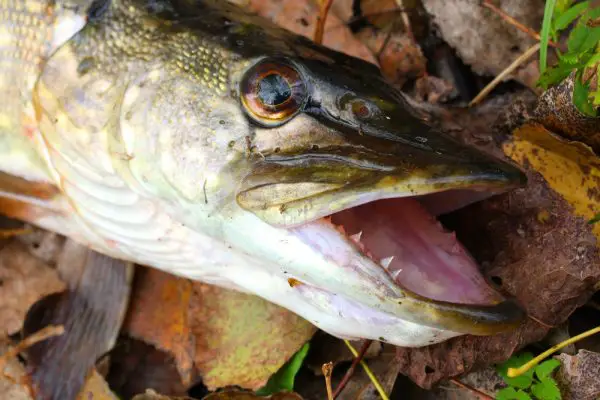
In Latin, the name “Pike,” translates as “Water Wolf.” This provides a foundation for one of the reasons why this fish made the list of the 5 dangerous fish you might encounter. A fish whose food source includes large birds and baby ducks deserves to be given some attention.
Named after a sharp, pole-like weapon from the middle ages, the pike has a large, elongated head with sharp teeth. With their fast, aggressive demeanor and knack to chomp on anything within reach, it is not just other fish species that must be weary around the Pike. Humans can quickly fall victim as well.
Having the potential to grow up to six feet, and tipping the scales of over 60 pounds, pike fish have the ability to do some overpowering and damage to you, your equipment, and your boat. With an aggressive creature this size, the challenge rests on the angler to control the pikes head, all while staying clear of the teeth.
If possible, partial submersion is the optimal set-up for safely reeling in these guys. Pike are known for their overwhelming ability to thrash around once pulled from the water. Utilizing a net and gloves to control the pike is often the relied upon method, but if those are unavailable, Field and Stream offers this gill-plate grab technique to keep you safe. You could aslo read more about the Canada pike fishing tips.
Lionfish
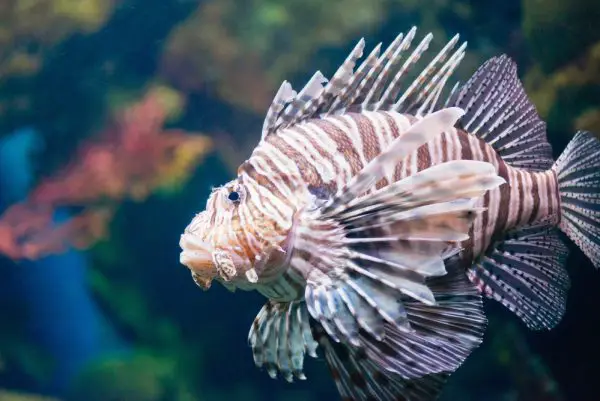
Once considered the most venomous fish in the water, the lionfish has lost its reign to the Stonefish; however, the lion deserves consideration as one of the 5 dangerous fish you may encounter. The lionfish, originating in the confluence of the Indian and Pacific Oceans, can now be found on the southeastern shores of the United States and into the Dominican Republic region, where presence has been responsible for keeping people out of the water.
Considered an invasive species in the coral reef regions of the Atlantic Ocean, lionfish, once ornamental aquarium fish, were believed to have been introduced to the eastern waters by those no longer interested in keeping them as aquarium fish. (NOAA)
Not known to be aggressive towards humans, unless provoked, the lionfish still present a danger due to their venomous spines. The three spines, the dorsal, anal, and pelvic, produce venom from glands when compressed by pressure. If impaled by one of the spines, a human will be subjected to extreme pain and swelling. In some cases of lionfish impalements, symptoms have ranged from diarrhea, to cardiovascular compromise, and even paralysis.
It is recommended that when handling lionfish, the angler wear gloves to prevent contact with the spines. If you are preparing the lionfish for the dinner table, the spines must be removed with an extrication tool, such as scissors or another similar device.
Should you get attacked by, or exposed to a spine prick, it is suggested that soaking the injury under hot water and seek medical assistance quickly to prevent any compromise to health.
Stonefish
Lastly, the family kin of the lionfish, the stonefish, takes the reign of the “Most Venomous Fish” in the world. (PADI) Stonefish have a row of spines on their back, which can extend in times of danger. Through these spines, the stonefish deliver the venom into their predators, or the unsuspecting innocent bystander unlucky enough to step on it. The higher the pressure placed on the spines, the larger amount of venom that will be produced.
The venom produced by a stonefish is considered one of the most powerful venoms in the oceanic world. Having the potential to be lethal in as little as three hours, it will also surely cause excruciating pain and swelling. More serious cases include death of the surrounding tissue, weakening of the muscles of the victim, temporary paralysis, and in the worst case scenario, death.
Often resembling stones on the water bottom, hence their namesake, the stonefish easily blend into their environments, making any precautionary measures difficult. If you near it, the fish will attack a perceived threat, leaving the victim to wonder what they are under attack from due to the conspicuous stone look.
Present in the Indo-Pacific region, like the Lionfish, they are often found around the coral reefs or within rock environments. Another unique characteristic of the stonefish is their ability to live out of water on a temporary basis. (softschools.com) This enlarges the danger area for humans, making susceptibility an issue for beachcombers.






